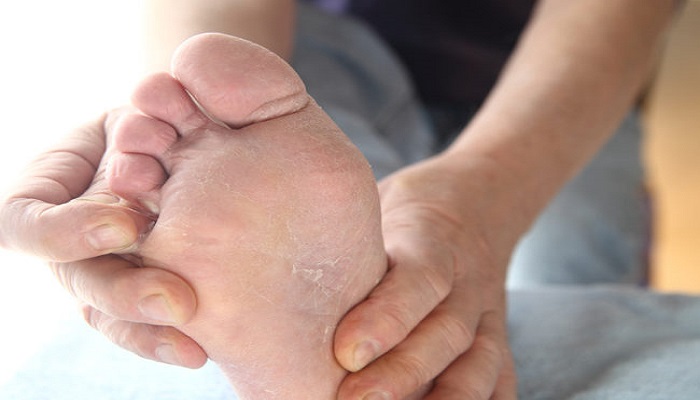Fungus is microscopic organism whose various species cause serious infections in human. One of them is athlete’s foot or tinea pedis which usually occurs between the toes of the person. It is most likely to infect those, having sweaty feet in tight shoes for longtime. This is why the disease is commonly known as athlete’s foot as they usually get this infection. This article includes the signs and symptoms, causes and the possible treatment options for athletes’ foot.
Signs and symptoms of athlete’s foot
Symptoms of Athlete’s foot infection are:
- Scaly rash on skin, mostly between the toes
- Sometime it may be confused with dryness of skin
- Itching which gets worse just as you take off yours shoes and socks
- Blisters and scars due to itching
- Burning sensation
Causes
Athlete’s foot is dermatophytosis- fungal skin infection and is closely linked to ringworm and some other skin infection as their causative agent is fungus. These are:
- Fungal species of tryichophyton
- Epidermophyton
- Microsporum
Damp and humid conditions favor the fungal growth and it further leads to infection. This infection is contagious and the clothing and shoes of that person may spare the infection to others.
Moreover, if not treated within time may lead to severe complication. Initially, cracks are formed in the dry scaly skin. Consequently, the opportunistic microbes such as bacterial species also reside here and worsen the infection and may cause inflammation in lymphatic vessels. Fungal hyphae spread to toenails, groin or hands and this condition is known as oncomycosis. Itching and rigorous scraping may cause excoriations or open wounds.
Risk factors
Some of us are at greater risk of developing athlete’s foot. These cases are:
- Those wearing damp sock and tightfitting shoes frequently
- Sharing mats, rugs or clothing with those already having a fungal infection
- Habit of barefoot walking
- Hyperhydrosis- a condition of abnormally excess sweating
- Diabetic’s patients
- Immune-compromised individuals such as those already have some health issues
- HIV/ AIDS patients
- Men are more likely to get infection than women
Diagnosis
If you have frequent itching and dry skin and it does get better or heal after sometime or using the common ointments, perhaps you should see a doctor. Doctors mostly diagnose by physical examination of the scratches and rashes of skin. Otherwise direct microscopy is the second option. A potassium hydroxide preparation of skin scraping confirms the fungal infection. The presence of fungal hyphae confirms the infection.
Treatment options
About 30-40% cases of athlete’s foot resolve without any specific medication. While other need anti-fungal antibiotics for cure. Allylamines including terbinafine and azoles are some anti-fungal for curing athletes’ foot. One should wash the infected areas with anti fungal and must apply some topical creams in order to reduce the dryness and prevent the symptoms to get worse. In some cases, oral anti-fungal medicines are recommended. Some anti-fungal drugs are:
- Terbinafine
- Amphotericin
- Econazole
- Miconazole
- Fluconazole
Prevention
Prevention is always better than cure. So is the case with athlete’s foot. One can easily prevent infection by taking some precaution of maintaining hygiene. According to center of disease control and prevention, some of these are:
- Keep care of personal hygiene
- Whenever you wash feet, make sure they are dry specially between toes
- Use some locations or anti-fungal for your feet on routine basis
- Nails transmit the infection so make sure that nails are clean and clipped short
- Avoid sock and shoes that are too tight to ventilate
- Use alternate pair of shoes
- Use slipper and sandal where you can
- Not only the personal hygiene but also the laundry, mates and bed clothing’s must be clean and washed with some detergent or chlorine bleach to avoid any fungal infection
Bottom line
Athlete’s foot is a common fungal infection. This happens mainly due to poor ventilation and unhygienic conditions. Moreover, it is contagious, which needs proper care and treatment to avoid transmission.

